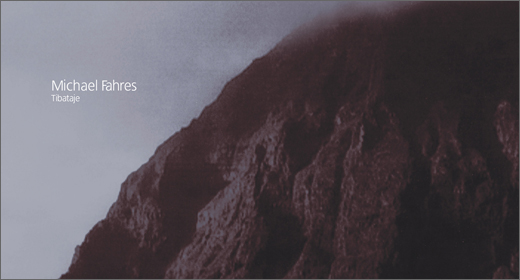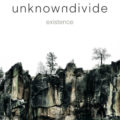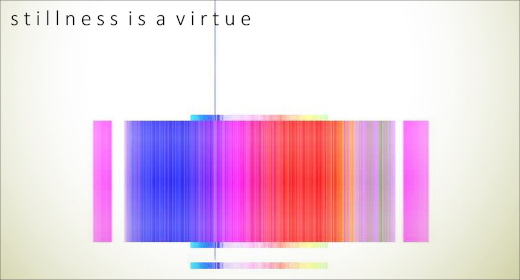Ambivalence is a captivating ambient album, the tracks flow through different territories, with so many quirky details, best described as an exploration of the shared human experience, expressed through a tapestry of sounds and emotions.

A deeply immersive and evocative listening experience
As if going into another realm, musical atmospheres that might be able to assimilate the mystic to the common, the unseen to the seen, the unknown to the known. I think that each track contains a voice study, each composition has what sounds to me like a found field recording, each one a different voice, usually a lonely human personality. You hear the voices of several different people telling you things in different languages. There is a bass, there is a beat. Not everything is in English so instead of the content of the words you are listening to the tone of the voice, regardless of the content, communicating the essence of the expression, the timbre of the voice, the speed of speaking, the mood, often confessional, sometimes maybe something wild like shamanistic trance utterances, the listener is alone or with someone in mind. Sometimes I can make out some words and that puts the story into a more interesting context.
With a slow emergence, it sounds like booming steam works musically clanking along until the rumbling bass beat takes over, the voice is coming in and out. Through all this is a monotone guy explaining his point of view, persistent and mildly annoyed. I cannot make out most of the words but I hear the syllabic studies portraying the hard story this guy has, the beat comes in, there is a bass, now there are other voices, women talking, they have another point of view and somewhat more enthusiasm for their tale. The track is titled “Same Pattern, Over and Over” (6:30). I don’t know, perhaps this is an echoing homage to the cyclical nature of life, layered with subtle sonic patterns that guide us into the composer Michael Caria’s immersive soundscape. I like it.
Next track, there is a young voice, a bit energized, their point of view is clear and strong, perhaps this is not a horse, this is a “Zebra” (2:59), whatever, the feeling evokes contrasting shades of existence, I am resonating with a harmonic blend of distinct tones, representing life’s monochrome yet vibrant aspects, expanded interior mental and spiritual awareness which is frequently accompanied by visions and emotional/intuitive (and sometimes physical) euphoria. I need it.
The third track, “Between People and Machines” (feat Guido Tabone) (5:19) begins with close sounds, a dreamy open mixture, the sound of someone touching the microphone somewhere, always giving in to these deeper looped atmospheres. I hear a sampled smoky sax instrumental. The voice is young and explains things patiently and sometimes with joy. This is a sobering story. She has a strong point that I probably sympathize with . She complains in a calm descriptive manner and gets more energized as we go. Always the saxophone is supplying a compelling pull. What I dig is the complex interplay between technology and humanity, here we have success capturing the rhythm of our modern, machine-driven existence through the sax. I want it.
A poignant reminder of the transitory nature of existence ::
Now the beat is loose and fun, a female voice, a shadow dancer weaves this jam within a circular groove, this is the title track “Ambivalence” (3:40) and I am confronted by a sonic embodiment of conflicting emotions, my feelings are resonating with the continuing human struggle between choices, feelings, and experiences. There is a dog in there. I will take it. “Before We Leave” (feat Alex Kozobolis) (4:38), I hear a lilting piano, but the sound is complex, sometimes it sounds open and spacious, as if in a big echoey transit station. Now the guy is explaining something delicate, and there is a voice on the phone, calm and clear, assured and supportive, the piano lingers lightly here in the dark, the guy tells his story, in his language with lots of color and implied unspoken elements, his story is comforting. To me this is a poignant reminder of the transitory nature of existence, while waiting there I am aware of all moments before departure. There I was, there I sat. That is how I will remember this part of my journey.
Back and forth, playful melodic girls’ voices are close and musical, the beat pushes some forward motion, I feel the wings of musical angels floating so close in the air, just hanging there, while the beat jumps all around. All the time she is calm and focused, repeating her part, “Voilet Connection” (2:30) and surely that captures the tension and release of intense relationships, the push and pull of opposing forces that paradoxically bring us together. Now to think about death. “Ashes We’ll Be” (6:49) begins with drone organ tones whirling and buzzing, soon comes the sly beat, understated and tricky with room for a bit more sadness and complexity. The voice is distant, sad and swimming in crying strings. Listening deeper I hear more voices. One guy is worked up, explaining things with a passion that burns. He is getting really worked up until someone talks him out of it, tries to calm him down but it’s over. We are left with a solemn acceptance of the inevitable end. I am taken further. Ultimately the new pulse comes in strong after the melodic chaos begins, we are truckin along, steady and smooth continuously one after the other: “Monochrome” (4:20). I hear the metal objects within, they provide lots of color and counter tempos. As if to interact with invisible forces that control uncertain outcomes, a minimalist exploration of the austere beauty found in simplicity, she is melodic and only appears after the beat has faded. As we float in and the beat takes us up into a nice jam, some back and forth with the bass and hand percussion, the voice is that of a child talking calm and happy several children explain things “Before We Collided” (3:54) and I know this is an elegy for my own ephemera retrospective. I look at the moments leading up to significant life changes, building anticipation with each note.
At the end, I hear a woman’s musical voice or voices singing, sometimes talking and repeating just syllables, fragments of meaning. I find more fragments that add texture and increase the pull. The track is “1960” (3:43) and surely is an homage to a defining era, smiling and evoking a sense of nostalgia and reflection through its timeless chords.
Ambivalence is a captivating ambient album, the tracks flow through different territories, with so many quirky details, best described as an exploration of the shared human experience, expressed through a tapestry of sounds and emotions, from the London-based artist Michael Caria who is known worldwide for the project Michael It’z. Originating from Italy, Caria masterfully intertwines his rich cultural background with London’s contemporary, ambient scene, resulting in a deeply immersive and evocative listening experience.
Ambivalence is available on Labile. [Bandcamp]

























![Romanowitch :: A critical season substitute (glitch.cool) — [concise]](https://igloomag.com/wp/wp-content/uploads/2025/03/romanowitch-a-critical-season-substitute_tape_feat-75x75.jpg)


